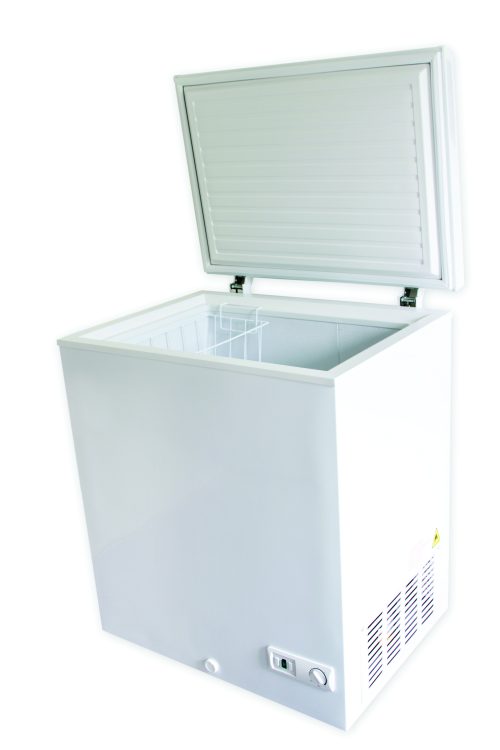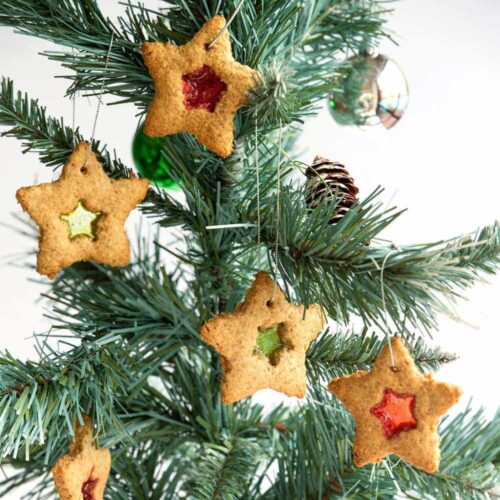
Do you know what is lurking in the bottom of your freezer, and how long it’s been there? Nutritionist Bronwen King explains how to make the most of your freezer so it becomes your new best kitchen friend.
Step-by-step guide to freezing food
Step 1 Preparing food for freezing
Only freeze fresh food. It’s no use preserving food to extend its quality if it has already started to spoil. The point of freezing is to keep food at its prime.
Freeze food as soon as and as quickly as possible. This will minimise the size of ice crystals that will form and limit any food damage when the food is thawed.
Blanch all raw vegetables before freezing. This kills enzymes that cause food spoilage.
Package well. Freezer burn happens when the surface of food is exposed to air. When preparing food for freezing it’s important to make sure as little of the surface is exposed as possible: use containers that will provide a good barrier between the food and air. It is important that the containers are a similar size to the amount of food being frozen. Good options include:
- Stackable containers with tight fitting lids. A cheap option is to go to a packaging warehouse and buy plastic containers and lids by the sleeve.
- Snap-lock bags. Choose the size that suits your need and remove excess air from the bag by pressing on it or by using a plastic straw inserted into the nearly sealed bag. Be sure to seal well. Where there is a lot of liquid, double bag your product.
- Plastic wrap and foil. With solid products like pastry or cheese, a layer of plastic wrap followed by a layer of heavy-duty aluminium foil will create a good barrier against moisture. Placing the wrapped package in a plastic bag will further protect it from freezer burn.
Certain foods such as berries, peas, chops and chicken pieces are best frozen as individual units, ie. free-flowing. Spread food in a single layer on a tray or shallow dish, freeze until solid and then pack into freezer bags or suitable container. This way you can use the quantity you need then reseal.
To prevent temperature fluctuations, only add a small amount of unfrozen food to your freezer at a time.
Remember: water expands when it freezes so be sure to leave at least 1cm headspace at the top of your filled containers to allow for this.
Step 2 Organising your freezer
Chest freezers are more difficult to organise but they are cheaper to buy and run. When you open the door of any upright freezer the cold air rushes out (and warm air rushes in to take its place). With a chest freezer, the cold air is at the bottom and stays there when the lid is lifted.
With a chest freezer, the secret to organisation is having several easy to remove ‘compartments’. Measure up your unit then purchase several different-coloured square or oblong buckets or baskets with handles. The idea is to have them fit neatly inside your freezer cavity. Colour-code your buckets (eg. green for soups, blue for meat, yellow for ready-to-go meals). The handles make them easy to access.
Organisation of upright freezers is relatively easy — decide which food items will be stored in which drawers or baskets and stick to your plan.
Keep your freezer full. This means the cold air does not have to circulate as much so less power is needed. Fill any spare space with bottles half filled with water.
Use stackable containers to help organisation. Clear labelling (including date of entry) and keeping an up-to-date inventory will also help you know what you have and how long it has been there.
Step 3 Reheating
Some dishes can be cooked straight from frozen. When doing this, use a lower temperature to start with then increase the temperature as the dish starts to thaw. Foods that reheat well from frozen include:
- soups, stews and casseroles
- frozen meals
- potato topped pies, eg. shepherd’s pie
- thin fish fillets, prawns and calamari when used in a stir-fry or soup
Never cook raw poultry and large joints of meat straight from frozen as you risk food poisoning and a poorer quality end product. Thaw these in the fridge until completely thawed before cooking. This may take 24 hours or more. Don’t be tempted to thaw meat on the bench as this again increases the risk.
What is freezing?
Freezing is a method of food preservation. It involves keeping food at a temperature of around –18°C or less. At this temperature:
- Microorganisms (yeasts, fungi, parasites and bacteria) don’t grow. That includes microorganisms that are harmless but cause food to spoil, and those that have the potential to make us sick (pathogens).
- Water turns to ice, which starves the microorganisms of the moisture they need.
- Enzymes involved in food spoilage are slowed or deactivated.
Does freezing kill all bugs?
No. Freezing does not make food sterile. The best way to kill pathogens and parasites is to cook food thoroughly before freezing. Successful freezing is a two-stage operation — cooking or preparing the food well before storage, and then storing correctly.
How long can I store frozen food?
See HFG-guide-to-freezing for a downloadable PDF that shows recommended maximum storage times (for best quality).
Remember: While the quality of food frozen beyond the recommended times will decline, the food will not make you sick unless it is improperly defrosted, handled and cooked. Use the advice on food packages as a guide as well.
What not to freeze
- Vegetables with a high water content such as lettuces, celery or cucumber. When the water expands during freezing the cell walls break causing the vegetables to go limp and mushy.
- Poultry with stuffing. The stuffing is much slower to freeze than the meat, which increases the risk of food poisoning.
- Cooked egg white either alone or made up into dishes (eg. bacon and egg pie or Scotch eggs) goes tough and rubbery.
- Sauces thickened with flour (such as white sauce or gravy) thin when thawed. Sauces thickened with cornflour hold their texture better.
- Egg-based sauces such as mayonnaise separate and curdle.
- Yoghurt, cream, sour cream and light cream cheese go watery.
- Jellies and dishes made from gelatine break down and separate.
- Unwhipped cream breaks down. (Whipped cream, however, freezes well.)
Is frozen food safe?
Food stored constantly at -18°C can be considered safe prior to thawing. It is not the freezing process that is a potential risk but what happens before and after it.
Before freezing
- Cook food well to destroy microorganisms and enzymes.
- Cool quickly and freeze as soon as possible.
- Handle raw meat and poultry with clean hands, seal and package appropriately and freeze quickly.
After freezing
Defrost in a way that minimises risk of contamination or microbial growth. The safest methods are:
- In the refrigerator: This is the slowest method and requires planning ahead but it is the safest method. Small items may defrost overnight but most foods require a day or two.
- In cold water: Place food in a leak-proof plastic bag and immerse in cold water. Check the water frequently to ensure it stays cold and cook immediately after thawing.
- In the microwave: This is the quickest method but the food needs to be cooked immediately because it is difficult to avoid some parts of the food warming and even starting to cook during the process.
Avoid defrosting on the bench as this puts food in the danger zone for microbial growth (40°C to 60°C).
Freezer tips to make life easy
Freezers can make meal preparation on busy days very simple. These tips will help you get delicious meals on the table super-fast!
- In the weekend, or on your day off, make double quantity of a meal that freezes well. Freeze half and use the following week on a busy night. Meals like shepherd’s pie (complete with potato topping), curries, casseroles, pasta dishes and meat sauces all freeze well.
- Save all your old bread and make a savoury crumb mix. Process bread with a little butter, some English mustard powder, some fresh herbs, eg. parsley or dill and some grated lemon rind. Freeze in snap-lock bags in one-cup lots. This is great pressed onto white fish then baked in a single layer in a dish. It is also a yummy topping for savoury bakes.
- If you have an abundance of tomatoes (or canned tomatoes), make a big pot of pasta sauce. Freeze in meal-sized portions for easy pasta meals.
- In winter make a big pot of soup on the weekend. Enjoy for lunch then freeze the left overs in single serve lots. Great to take for lunch during the week.
- Keep frozen pizza bases and grated mozzarella in your freezer. That way you always have the makings of an easy pizza.
- Keep some chicken breasts and frozen stir-fry vegetables. With a jar of stir-fry sauce and a packet of ready-to-go rice, you have an instant meal in less time than it would take to go for take-outs.
- Frozen crumbed fish portions and frozen wedges are great for chill-out Friday nights. Team them with a ready-made salad, sit back and relax!
Are frozen foods as healthy as fresh foods?
Commercially frozen fruit and vegetables are frozen at their best. While the freezing process causes some loss of vitamins and minerals they retain the remaining nutritional value for up to a year. If you are comparing them to fresh seasonal fruit and vegetables eaten soon after picking, fresh is likely to be best.
If you compare them to the old and tired versions lurking in the bottom of your fridge, frozen is likely to come up trumps.
The best advice is to freeze food at its peak, follow the guidelines for safe freezing, eat within the recommended freezer time and defrost safely. That way you know your food is the best it can be!
www.healthyfood.com










